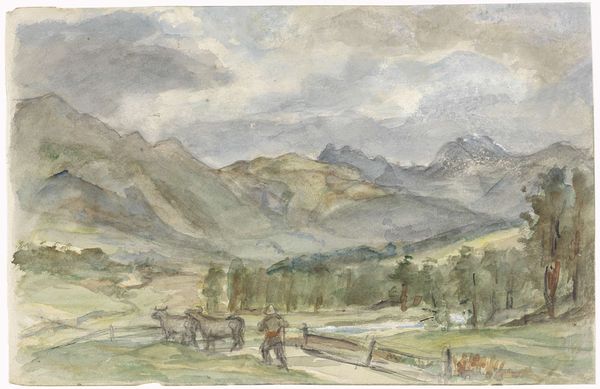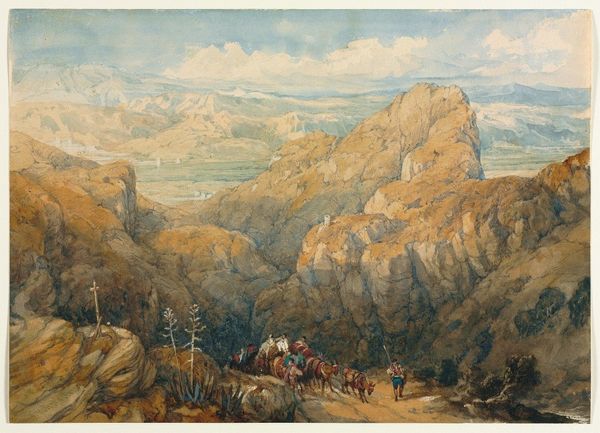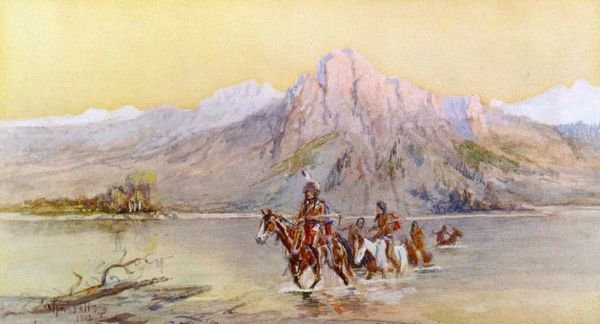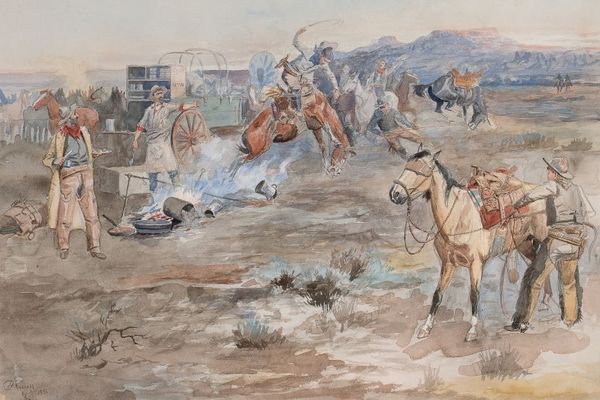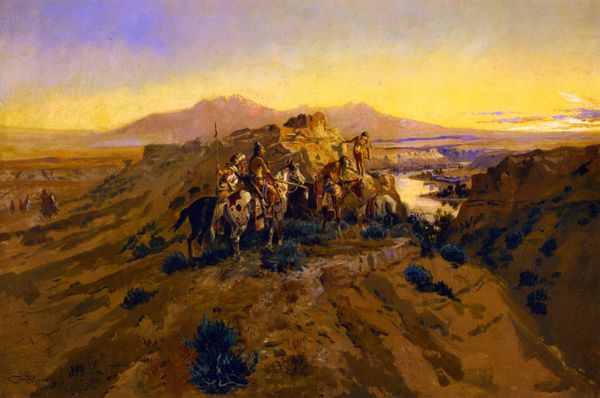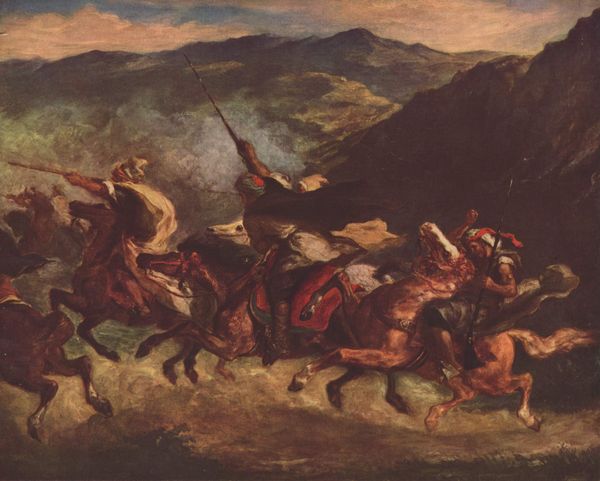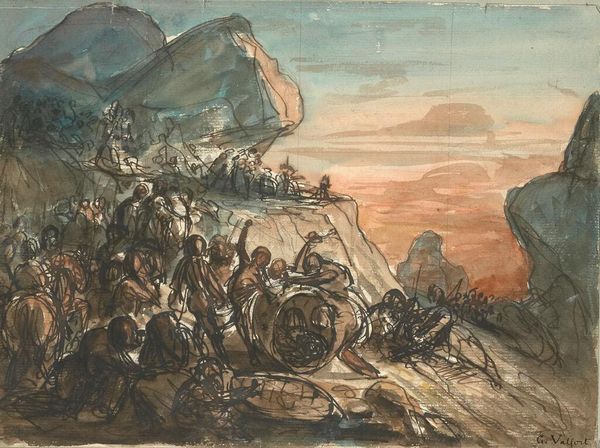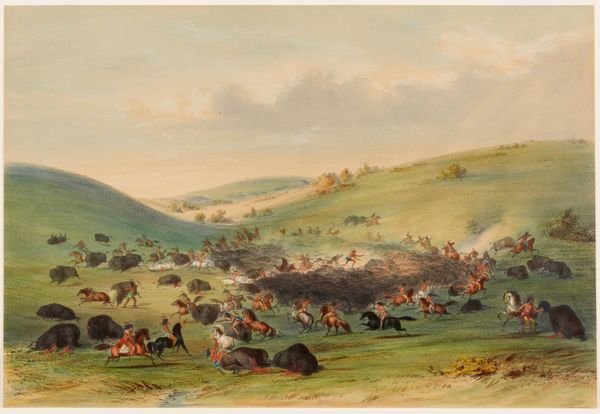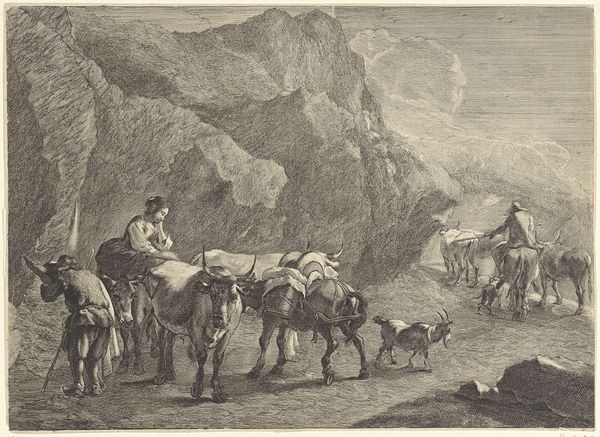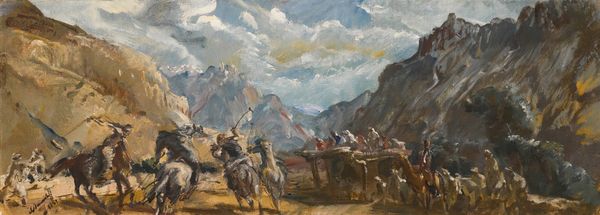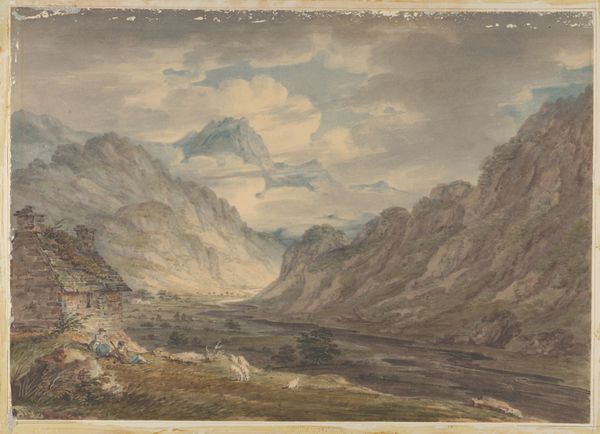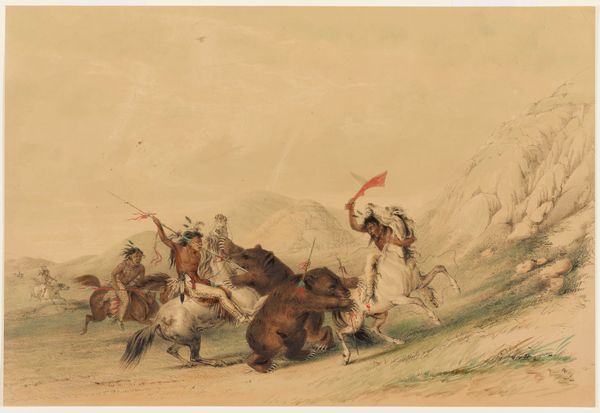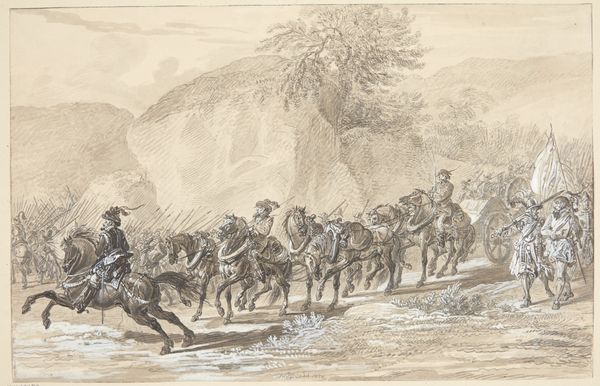
gouache, plein-air, watercolor
#
gouache
#
plein-air
#
landscape
#
oil painting
#
watercolor
#
watercolour illustration
#
genre-painting
#
watercolor
#
realism
Copyright: Public Domain: Artvee
Curator: The dust practically leaps off the surface here! Editor: Indeed. This is Alexandre Jacovleff's "Polo Game At Misgar," painted in 1931. It's a gouache and watercolor, a plein-air study of a polo match taking place in a mountainous region. Look at the immediate vitality within the means of its production; consider what the rough texture can teach us. Curator: My immediate reaction is about cultural performance. It's difficult to not consider how traditional gender roles would have played out during this activity, in Misgar. Is this solely an exercise of observing, or perhaps perpetuating social boundaries? Editor: These materials give this a documentarian's directness, wouldn't you say? It feels less academic, and more tied to on-site working processes, really immersing the artist and by extension the viewer in the labor of witnessing and creating. That's further amplified by its portability given it being watercolor. Curator: Certainly. I'm particularly drawn to the figures to the lower right—spectators of some sort—and their ambiguous relationship to the game, given potential hierarchical social status. Does Jacovleff depict class differences subtly here? What considerations did he have while representing these players, if any at all? Editor: I see a really fascinating contrast between the swift action rendered by a flurry of layered gouache marks in the game itself and the stiller rendering of those watching at the border. Jacovleff directs our eyes straight into the dynamic application of materiality in motion, don’t you think? Curator: It feels indicative of something! Perhaps even colonial viewpoints impacting what’s brought to the fore and how this translates artistically, and further so through Jacovleff’s selection of subject matter to portray, the stylistic representation he offers. These actions are political. Editor: Yes, and thinking materially—the quick, light medium itself seems so perfectly chosen for capturing fleeting moments in a very distant setting. I feel as though these specific paints also point towards a market eager for scenes of faraway and untouched peoples! Curator: That certainly opens doors for discussion surrounding the political charge. Thinking about spectatorship, social hierarchy, and representation adds fascinating texture, for sure. Editor: It is revealing to trace the hand through those material decisions, each dash a connection to the world.
Comments
No comments
Be the first to comment and join the conversation on the ultimate creative platform.
